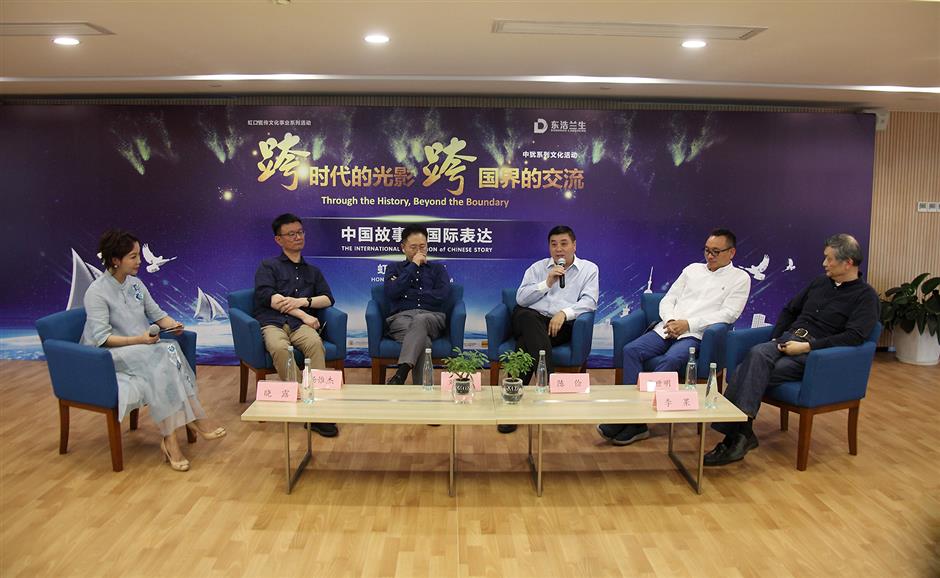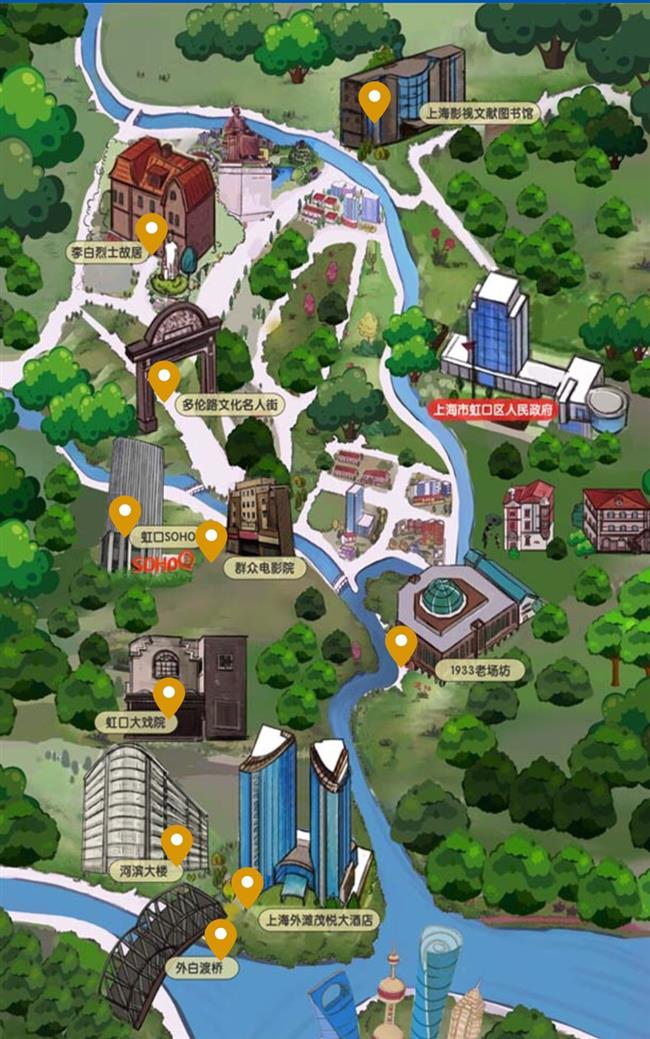The Jews of Shanghai, and its film industry

Scholars and experts discuss how to promote Chinese movies to the international market during a forum at the Sino-Jewish Culture and Technology Exchange Center.
A tourism map of China's early film industry was released over the weekend during a forum to help promote Chinese movie-making abroad.
It focuses on the important, but sometimes forgotten, history of Jews in the city.
The map, released by the Sino-Jewish Culture and Technology Exchange Center, highlights 10 historic sites, mainly in Hongkou District, where China's first cinema and early film industry was based and which was home to many Jews in the past.
The map is available on a Chinese-language WeChat application “shiguangditu.”
It will be available in English soon.
The sites include the Embankment Building built in 1933 on the banks of Suzhou Creek that once sheltered Jewish refugees as China took them in when Western countries turned them away, and which has appeared in many movie and TV productions.
The origins of the country's film business are marked on the map, such as the Hongkou Theater, China's first professional cinema dating to 1908, and the Qunzhong Cinema, built in 1928 on Sichuan Road N., once one of the most popular cinemas in the city.
Hongkou was once the most popular site for locals to watch movies, mainly at luxury hotels, public gardens and teahouses, Tang Weijie, deputy professor at Tongji University, told the Hongkou Film Forum at the center.
For instance, moving pictures first appeared in China in May, 1897, a year and half after the world's first movie was aired, at the Astor House Hotel near the Waibaidu Bridge in Hongkou. A cluster of early cinemas grew up on Sichuan Road N.
By the 1950s, there were 32 popular cinemas in Hongkou, making it the birthplace of China's movie industry and an important site for cultural exchange.
Scholars and experts shared their opinions on how to promote Chinese movies to the international market at the forum. It is one of the serial events hosted by the center to boost Sino-Jewish cultural exchanges.
Chen Jian, director of the Shanghai Jewish Refugees Museum, called for more stories about locals and Jews during World War II to be made into movies.
"The aspiring and positive topic is expected to touch the common sentiment of people around the world," Chen told the forum.
About 23,000 Jewish people arrived in Shanghai between 1933 and 1941 to escape Nazi oppression.
Most lived in Hongkou and established deep friendships with locals.
The center, developed by the Donghao Lansheng Group, aims to promote Sino-Jewish exchanges in culture, education, science and trade.
Hebrew language salons, Jewish culture lectures and exhibitions of high-tech products from Israeli companies will be held regularly at the center.
Sino-Jewish cultural ambassadors will be recruited from local universities to promote these events.
An exhibition is also ongoing at the center, which is on the 20th floor of the Baishu Mansion in Hongkou.
About 30 oil paintings show how Jews adapted to China's most internationally mixed city and tell of the enduring friendships they made with locals.

A map of China’s early film industry in Hongkou District















